Jianyu Wang
Finding Fantastic Experts in MoEs: A Unified Study for Expert Dropping Strategies and Observations
Apr 10, 2025Abstract:Sparsely activated Mixture-of-Experts (SMoE) has shown promise in scaling up the learning capacity of neural networks. However, vanilla SMoEs have issues such as expert redundancy and heavy memory requirements, making them inefficient and non-scalable, especially for resource-constrained scenarios. Expert-level sparsification of SMoEs involves pruning the least important experts to address these limitations. In this work, we aim to address three questions: (1) What is the best recipe to identify the least knowledgeable subset of experts that can be dropped with minimal impact on performance? (2) How should we perform expert dropping (one-shot or iterative), and what correction measures can we undertake to minimize its drastic impact on SMoE subnetwork capabilities? (3) What capabilities of full-SMoEs are severely impacted by the removal of the least dominant experts, and how can we recover them? Firstly, we propose MoE Experts Compression Suite (MC-Suite), which is a collection of some previously explored and multiple novel recipes to provide a comprehensive benchmark for estimating expert importance from diverse perspectives, as well as unveil numerous valuable insights for SMoE experts. Secondly, unlike prior works with a one-shot expert pruning approach, we explore the benefits of iterative pruning with the re-estimation of the MC-Suite criterion. Moreover, we introduce the benefits of task-agnostic fine-tuning as a correction mechanism during iterative expert dropping, which we term MoE Lottery Subnetworks. Lastly, we present an experimentally validated conjecture that, during expert dropping, SMoEs' instruction-following capabilities are predominantly hurt, which can be restored to a robust level subject to external augmentation of instruction-following capabilities using k-shot examples and supervised fine-tuning.
Determined blind source separation via modeling adjacent frequency band correlations in speech signals
Apr 05, 2025Abstract:Multichannel blind source separation (MBSS), which focuses on separating signals of interest from mixed observations, has been extensively studied in acoustic and speech processing. Existing MBSS algorithms, such as independent low-rank matrix analysis (ILRMA) and multichannel nonnegative matrix factorization (MNMF), utilize the low-rank structure of source models but assume that frequency bins are independent. In contrast, independent vector analysis (IVA) does not rely on a low-rank source model but rather captures frequency dependencies based on a uniform correlation assumption. In this work, we demonstrate that dependencies between adjacent frequency bins are significantly stronger than those between bins that are farther apart in typical speech signals. To address this, we introduce a weighted Sinkhorn divergence-based ILRMA (wsILRMA) that simultaneously captures these inter-frequency dependencies and models joint probability distributions. Our approach incorporates an inter-frequency correlation constraint, leading to improved source separation performance compared to existing methods, as evidenced by higher Signal-to-Distortion Ratios (SDRs) and Source-to-Interference Ratios (SIRs).
CAFe: Unifying Representation and Generation with Contrastive-Autoregressive Finetuning
Mar 25, 2025Abstract:The rapid advancement of large vision-language models (LVLMs) has driven significant progress in multimodal tasks, enabling models to interpret, reason, and generate outputs across both visual and textual domains. While excelling in generative tasks, existing LVLMs often face limitations in tasks requiring high-fidelity representation learning, such as generating image or text embeddings for retrieval. Recent work has proposed finetuning LVLMs for representational learning, but the fine-tuned model often loses its generative capabilities due to the representational learning training paradigm. To address this trade-off, we introduce CAFe, a contrastive-autoregressive fine-tuning framework that enhances LVLMs for both representation and generative tasks. By integrating a contrastive objective with autoregressive language modeling, our approach unifies these traditionally separate tasks, achieving state-of-the-art results in both multimodal retrieval and multimodal generative benchmarks, including object hallucination (OH) mitigation. CAFe establishes a novel framework that synergizes embedding and generative functionalities in a single model, setting a foundation for future multimodal models that excel in both retrieval precision and coherent output generation.
IDEA Prune: An Integrated Enlarge-and-Prune Pipeline in Generative Language Model Pretraining
Mar 07, 2025Abstract:Recent advancements in large language models have intensified the need for efficient and deployable models within limited inference budgets. Structured pruning pipelines have shown promise in token efficiency compared to training target-size models from scratch. In this paper, we advocate incorporating enlarged model pretraining, which is often ignored in previous works, into pruning. We study the enlarge-and-prune pipeline as an integrated system to address two critical questions: whether it is worth pretraining an enlarged model even when the model is never deployed, and how to optimize the entire pipeline for better pruned models. We propose an integrated enlarge-and-prune pipeline, which combines enlarge model training, pruning, and recovery under a single cosine annealing learning rate schedule. This approach is further complemented by a novel iterative structured pruning method for gradual parameter removal. The proposed method helps to mitigate the knowledge loss caused by the rising learning rate in naive enlarge-and-prune pipelines and enable effective redistribution of model capacity among surviving neurons, facilitating smooth compression and enhanced performance. We conduct comprehensive experiments on compressing 2.8B models to 1.3B with up to 2T tokens in pretraining. It demonstrates the integrated approach not only provides insights into the token efficiency of enlarged model pretraining but also achieves superior performance of pruned models.
Joint Tensor and Inter-View Low-Rank Recovery for Incomplete Multiview Clustering
Mar 04, 2025



Abstract:Incomplete multiview clustering (IMVC) has gained significant attention for its effectiveness in handling missing sample challenges across various views in real-world multiview clustering applications. Most IMVC approaches tackle this problem by either learning consensus representations from available views or reconstructing missing samples using the underlying manifold structure. However, the reconstruction of learned similarity graph tensor in prior studies only exploits the low-tubal-rank information, neglecting the exploration of inter-view correlations. This paper propose a novel joint tensor and inter-view low-rank Recovery (JTIV-LRR), framing IMVC as a joint optimization problem that integrates incomplete similarity graph learning and tensor representation recovery. By leveraging both intra-view and inter-view low rank information, the method achieves robust estimation of the complete similarity graph tensor through sparse noise removal and low-tubal-rank constraints along different modes. Extensive experiments on both synthetic and real-world datasets demonstrate the superiority of the proposed approach, achieving significant improvements in clustering accuracy and robustness compared to state-of-the-art methods.
Determined Blind Source Separation with Sinkhorn Divergence-based Optimal Allocation of the Source Power
Feb 25, 2025Abstract:Blind source separation (BSS) refers to the process of recovering multiple source signals from observations recorded by an array of sensors. Common approaches to BSS, including independent vector analysis (IVA), and independent low-rank matrix analysis (ILRMA), typically rely on second-order models to capture the statistical independence of source signals for separation. However, these methods generally do not account for the implicit structural information across frequency bands, which may lead to model mismatches between the assumed source distributions and the distributions of the separated source signals estimated from the observed mixtures. To tackle these limitations, this paper shows that conventional approaches such as IVA and ILRMA can easily be leveraged by the Sinkhorn divergence, incorporating an optimal transport (OT) framework to adaptively correct source variance estimates. This allows for the recovery of the source distribution while modeling the inter-band signal dependence and reallocating source power across bands. As a result, enhanced versions of these algorithms are developed, integrating a Sinkhorn iterative scheme into their standard implementations. Extensive simulations demonstrate that the proposed methods consistently enhance BSS performance.
Instruction-Following Pruning for Large Language Models
Jan 07, 2025



Abstract:With the rapid scaling of large language models (LLMs), structured pruning has become a widely used technique to learn efficient, smaller models from larger ones, delivering superior performance compared to training similarly sized models from scratch. In this paper, we move beyond the traditional static pruning approach of determining a fixed pruning mask for a model, and propose a dynamic approach to structured pruning. In our method, the pruning mask is input-dependent and adapts dynamically based on the information described in a user instruction. Our approach, termed "instruction-following pruning", introduces a sparse mask predictor that takes the user instruction as input and dynamically selects the most relevant model parameters for the given task. To identify and activate effective parameters, we jointly optimize the sparse mask predictor and the LLM, leveraging both instruction-following data and the pre-training corpus. Experimental results demonstrate the effectiveness of our approach on a wide range of evaluation benchmarks. For example, our 3B activated model improves over the 3B dense model by 5-8 points of absolute margin on domains such as math and coding, and rivals the performance of a 9B model.
Apple Intelligence Foundation Language Models
Jul 29, 2024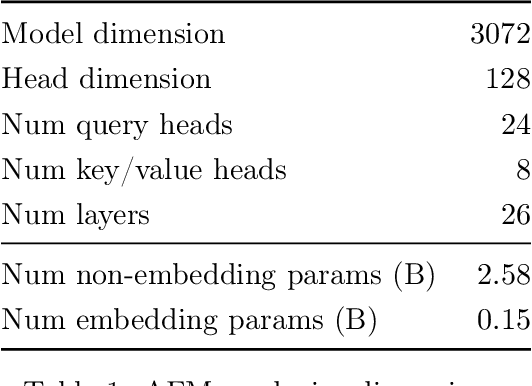
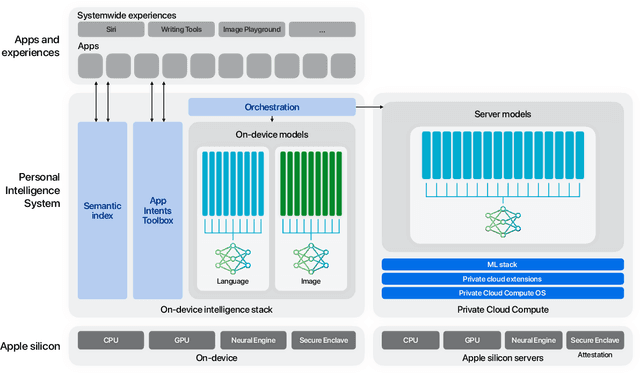

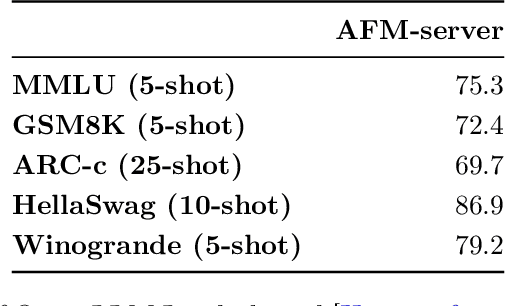
Abstract:We present foundation language models developed to power Apple Intelligence features, including a ~3 billion parameter model designed to run efficiently on devices and a large server-based language model designed for Private Cloud Compute. These models are designed to perform a wide range of tasks efficiently, accurately, and responsibly. This report describes the model architecture, the data used to train the model, the training process, how the models are optimized for inference, and the evaluation results. We highlight our focus on Responsible AI and how the principles are applied throughout the model development.
SeaLLMs 3: Open Foundation and Chat Multilingual Large Language Models for Southeast Asian Languages
Jul 29, 2024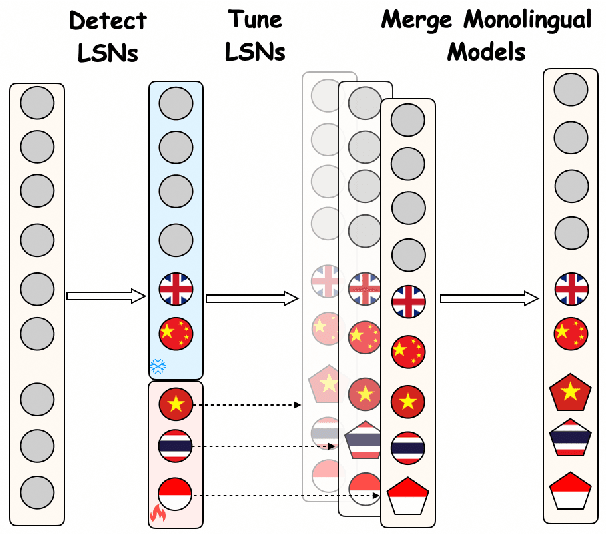
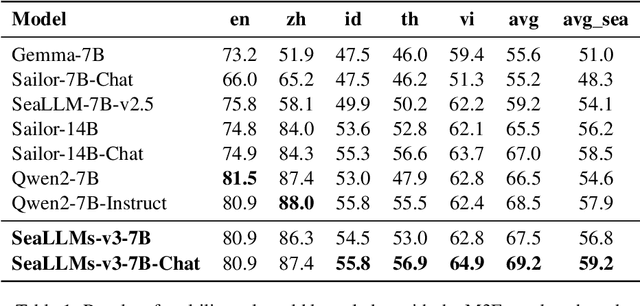
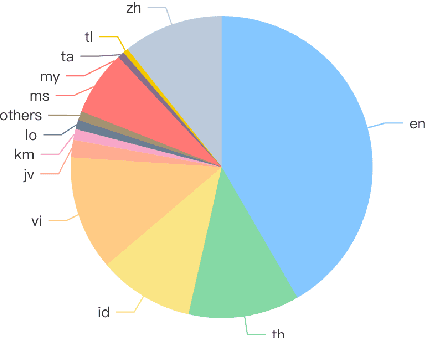
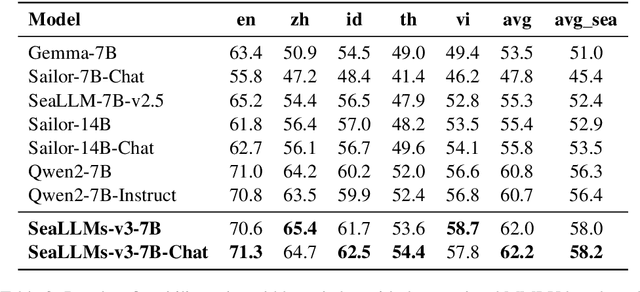
Abstract:Large Language Models (LLMs) have shown remarkable abilities across various tasks, yet their development has predominantly centered on high-resource languages like English and Chinese, leaving low-resource languages underserved. To address this disparity, we present SeaLLMs 3, the latest iteration of the SeaLLMs model family, tailored for Southeast Asian languages. This region, characterized by its rich linguistic diversity, has lacked adequate language technology support. SeaLLMs 3 aims to bridge this gap by covering a comprehensive range of languages spoken in this region, including English, Chinese, Indonesian, Vietnamese, Thai, Tagalog, Malay, Burmese, Khmer, Lao, Tamil, and Javanese. Leveraging efficient language enhancement techniques and a specially constructed instruction tuning dataset, SeaLLMs 3 significantly reduces training costs while maintaining high performance and versatility. Our model excels in tasks such as world knowledge, mathematical reasoning, translation, and instruction following, achieving state-of-the-art performance among similarly sized models. Additionally, we prioritized safety and reliability by addressing both general and culture-specific considerations and incorporated mechanisms to reduce hallucinations. This work underscores the importance of inclusive AI, showing that advanced LLM capabilities can benefit underserved linguistic and cultural communities.
Multi-Frequency Resonant Circuit Based Multi-User Emergency Through-the-Earth Communication with Magnetic Induction
Jul 24, 2024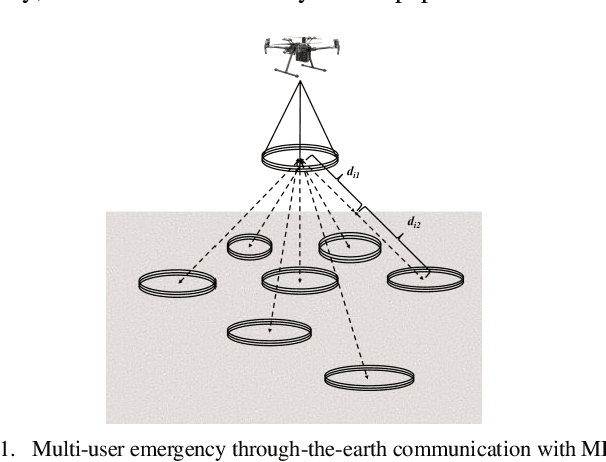
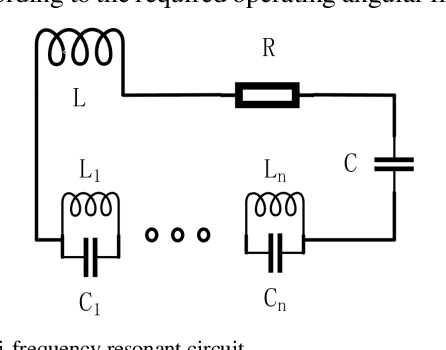
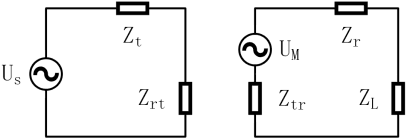
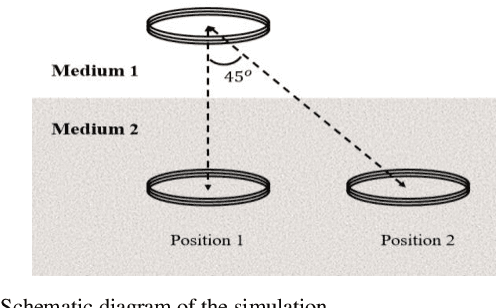
Abstract:Magnetic induction (MI) is an effective technique in emergency through-the-earth communications due to the higher penetration efficiency and lower propagation loss as compared with electromagnetic wave communication. How to cancel the interference between different users and enhance the effectiveness of multi-user transmissions is imperative for the practical application of MI communication. In this paper, we use multi-frequency resonant circuit to establish multiple resonant frequencies for MI communication. The transmissions corresponding to different users operate at different resonant frequencies and multi-user interferences can be naturally mitigated. Numerical results verify our theoretical analyses and show that the proposed system can significantly enhance the performance.
 Add to Chrome
Add to Chrome Add to Firefox
Add to Firefox Add to Edge
Add to Edge